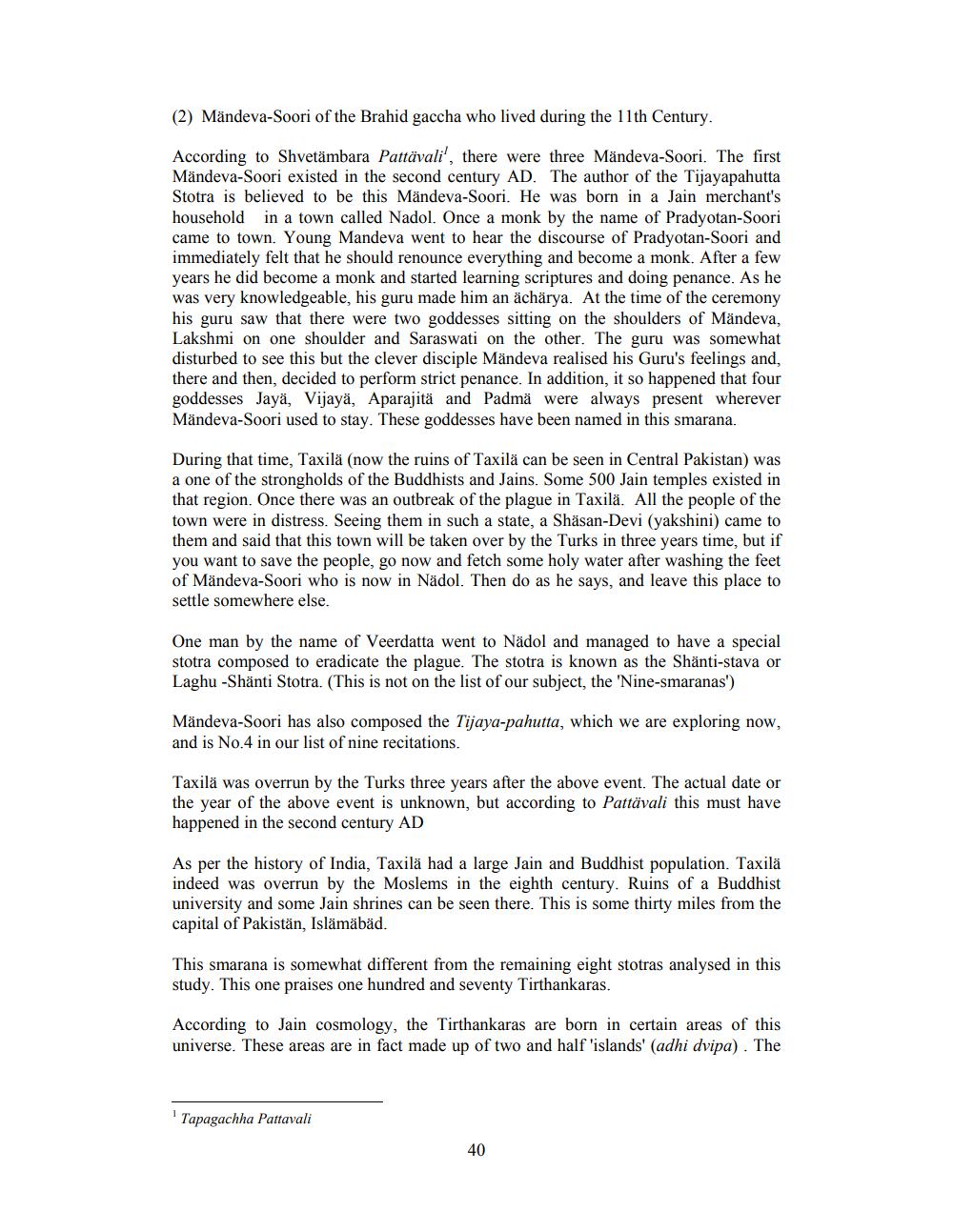________________
(2) Mändeva-Soori of the Brahid gaccha who lived during the 11th Century.
According to Shvetämbara Pattävali', there were three Mändeva-Soori. The first Mändeva-Soori existed in the second century AD. The author of the Tijayapahutta Stotra is believed to be this Mändeva-Soori. He was born in a Jain merchant's household in a town called Nadol. Once a monk by the name of Pradyotan-Soori came to town. Young Mandeva went to hear the discourse of Pradyotan-Soori and immediately felt that he should renounce everything and become a monk. After a few years he did become a monk and started learning scriptures and doing penance. As he was very knowledgeable, his guru made him an ächärya. At the time of the ceremony his guru saw that there were two goddesses sitting on the shoulders of Mändeva, Lakshmi on one shoulder and Saraswati on the other. The guru was somewhat disturbed to see this but the clever disciple Mändeva realised his Guru's feelings and, there and then, decided to perform strict penance. In addition, it so happened that four goddesses Jaya, Vijaya, Aparajitä and Padmä were always present wherever Mändeva-Soori used to stay. These goddesses have been named in this smarana.
During that time, Taxilä (now the ruins of Taxilä can be seen in Central Pakistan) was a one of the strongholds of the Buddhists and Jains. Some 500 Jain temples existed in that region. Once there was an outbreak of the plague in Taxilä. All the people of the town were in distress. Seeing them in such a state, a Shasan-Devi (yakshini) came to them and said that this town will be taken over by the Turks in three years time, but if you want to save the people, go now and fetch some holy water after washing the feet of Mändeva-Soori who is now in Nädol. Then do as he says, and leave this place to settle somewhere else.
One man by the name of Veerdatta went to Nädol and managed to have a special stotra composed to eradicate the plague. The stotra is known as the Shänti-stava or Laghu -Shanti Stotra. (This is not on the list of our subject, the 'Nine-smaranas)
Mändeva-Soori has also composed the Tijaya-pahutta, which we are exploring now, and is No.4 in our list of nine recitations.
Taxilä was overrun by the Turks three years after the above event. The actual date or the year of the above event is unknown, but according to Pattävali this must have happened in the second century AD
As per the history of India, Taxilä had a large Jain and Buddhist population. Taxilä indeed was overrun by the Moslems in the eighth century. Ruins of a Buddhist university and some Jain shrines can be seen there. This is some thirty miles from the capital of Pakistän, Islämäbäd.
This smarana is somewhat different from the remaining eight stotras analysed in this study. This one praises one hundred and seventy Tirthankaras.
According to Jain cosmology, the Tirthankaras are born in certain areas of this universe. These areas are in fact made up of two and half 'islands' (adhi dvipa). The
Tapagachha Pattavali




